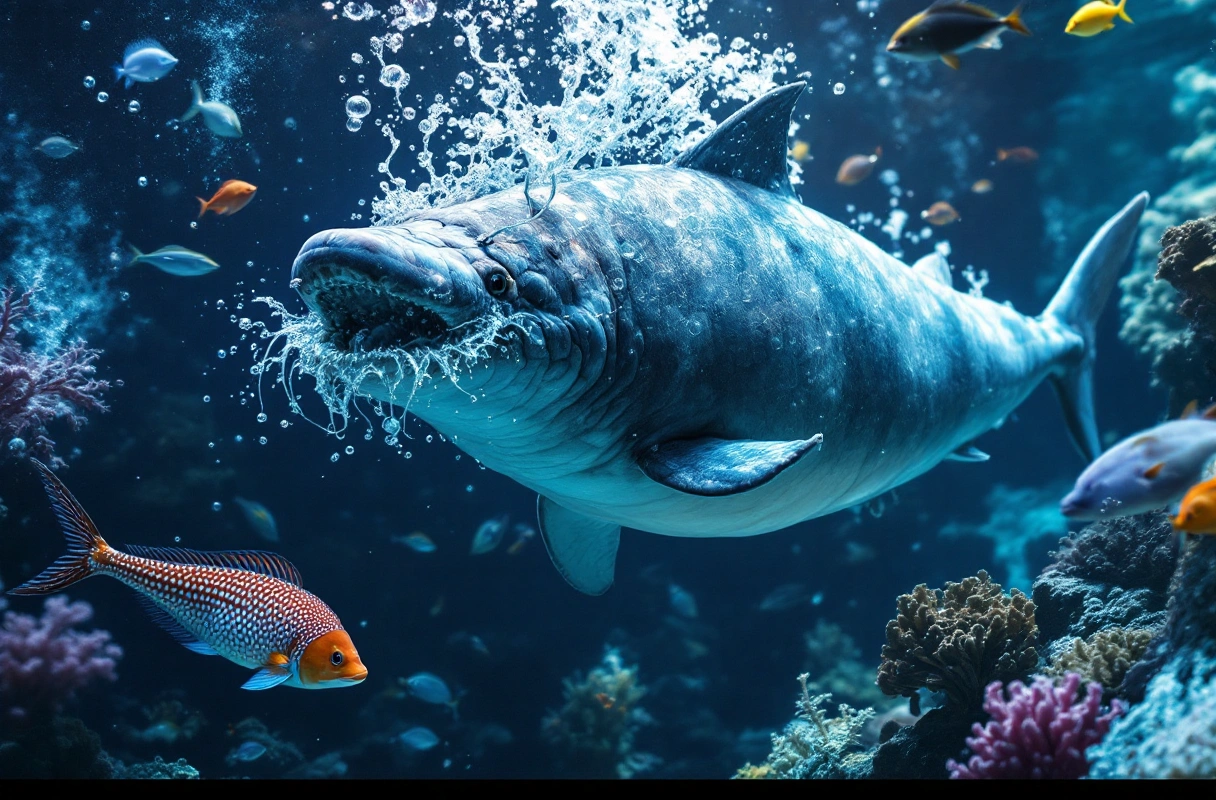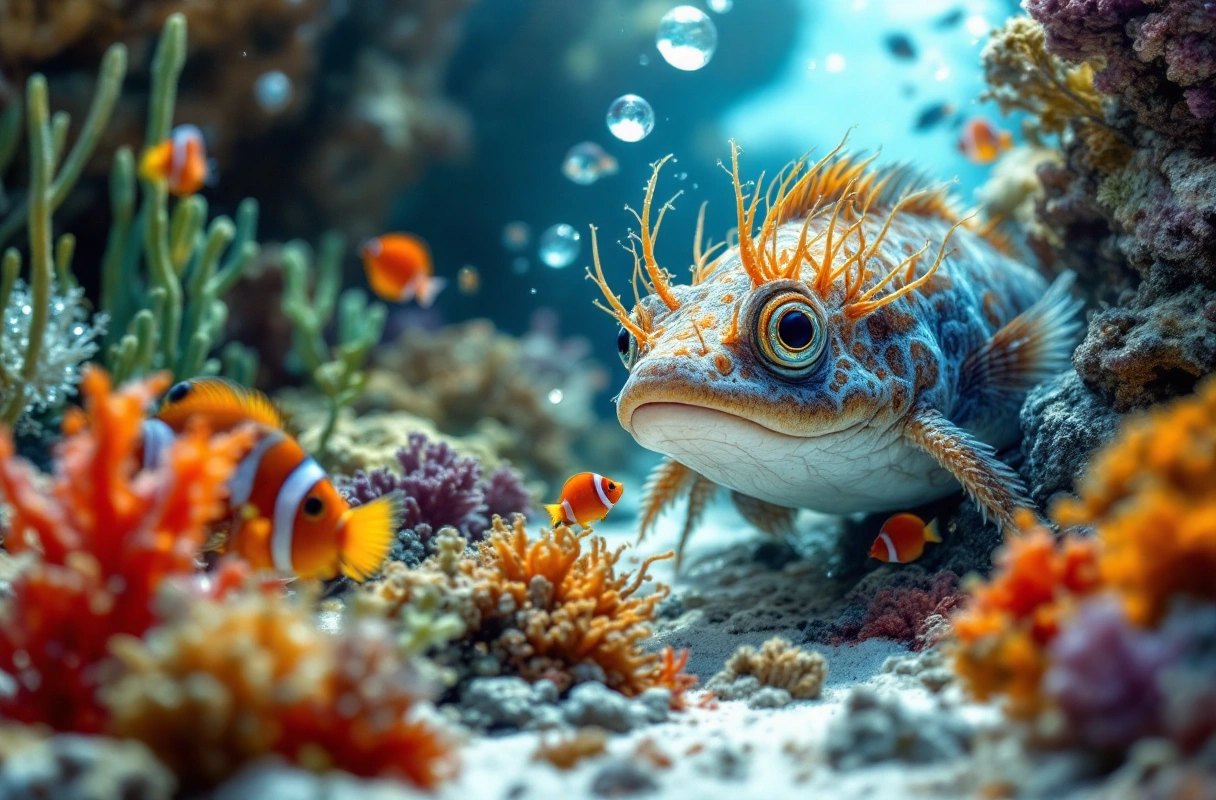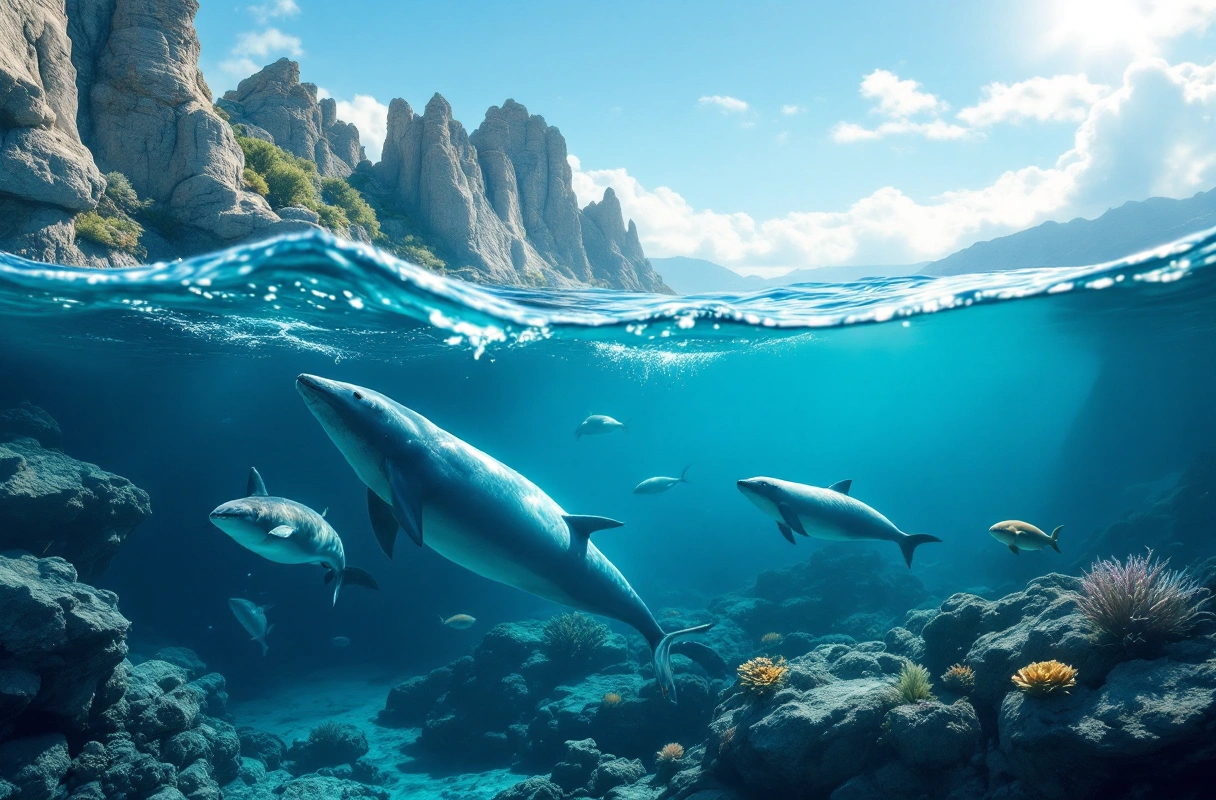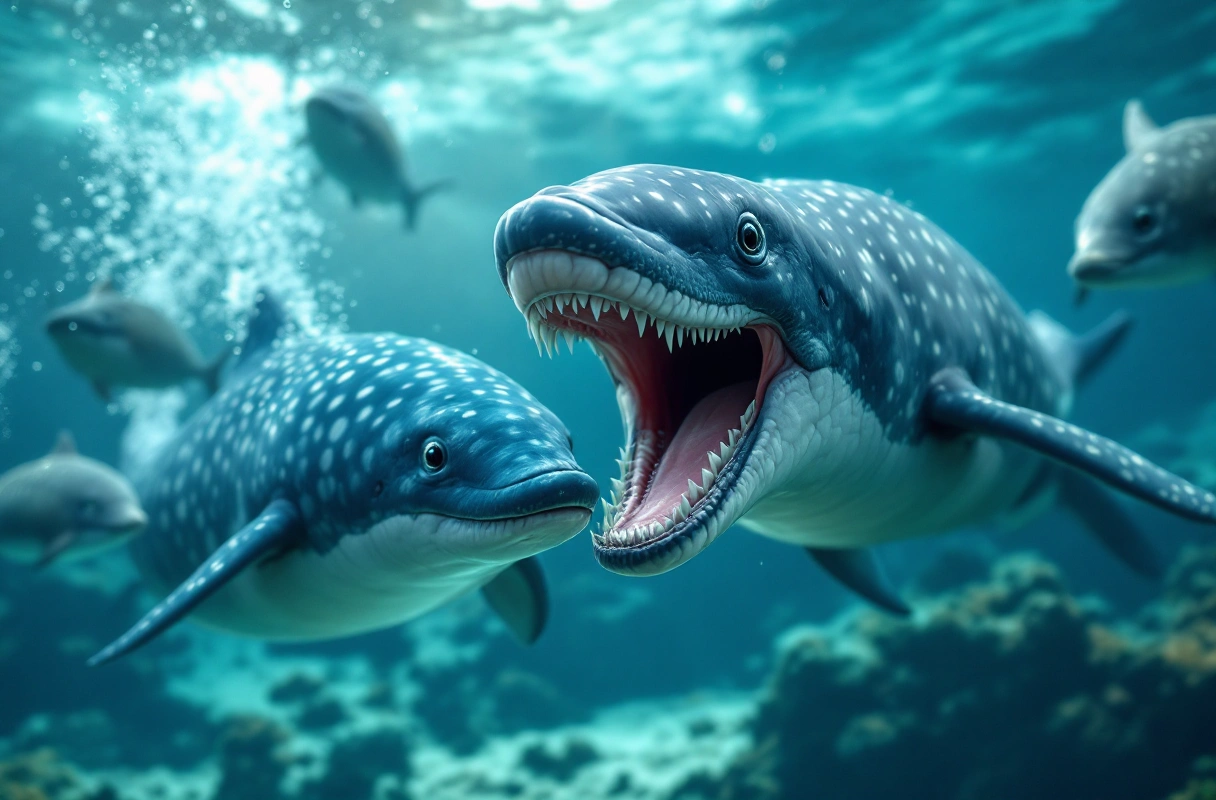
The ocean, a vast and intricate expanse, teems with life that can be broadly categorized into two groups: sea creatures and aquatic mammals. Understanding these categories is crucial for anyone interested in marine biology, ecology, or simply the wonders of the underwater world. This article delves into the distinctions between sea creatures and aquatic mammals, their roles in underwater ecosystems, and the significant contributions they make to the health of our planet.

Sea creatures encompass a diverse range of organisms that inhabit the oceans, seas, and other bodies of saltwater. This group includes species such as fish, mollusks, crustaceans, and various types of plankton. The defining characteristic of sea creatures is that they are primarily cold-blooded, relying on the surrounding water to regulate their body temperature.
Sea creatures exhibit a remarkable variety of adaptations that allow them to thrive in their aquatic environments. For instance, many fish possess gills that enable them to extract oxygen from water, while others, like cephalopods, have developed advanced camouflage techniques for predation or evasion. The diversity of sea creatures is not just fascinating but also vital to the health of marine ecosystems.
When discussing sea creatures, it's essential to recognize the wide range of types and their ecological roles. Some common examples include:
Understanding the roles of these sea creatures provides insight into the complex interdependencies that characterize underwater ecosystems.

Aquatic mammals, on the other hand, are warm-blooded creatures that have adapted to life in the water. This group includes species such as whales, dolphins, seals, and manatees. Unlike sea creatures, aquatic mammals breathe air through lungs and must surface to breathe, which distinguishes them significantly from their cold-blooded counterparts.
Aquatic mammals exhibit unique adaptations that facilitate their survival in marine environments. For example, whales possess blubber to insulate them in cold waters, while dolphins have developed sophisticated communication systems. These adaptations not only allow them to thrive in their habitats but also contribute to the overall health of marine ecosystems.
Some common aquatic mammals include:
Recognizing the diversity of aquatic mammals highlights their importance in maintaining the balance of underwater ecosystems.

One of the most significant differences between sea creatures and aquatic mammals is their physiology. Sea creatures are generally cold-blooded, relying on their environment for temperature regulation, while aquatic mammals are warm-blooded and maintain a constant body temperature. This physiological difference influences their behavior, reproductive strategies, and ecological roles.
In addition, the respiratory systems of these two groups differ fundamentally. Sea creatures, such as fish, utilize gills to extract oxygen from water, while aquatic mammals possess lungs and must surface periodically to breathe air. This distinction affects their mobility, feeding habits, and habitat choices.
The reproductive strategies of sea creatures and aquatic mammals also vary significantly. Many sea creatures, like fish and mollusks, reproduce through external fertilization, where eggs are fertilized outside the female's body. This strategy often results in large numbers of offspring, which helps ensure the survival of the species despite high predation rates.
In contrast, aquatic mammals typically exhibit internal fertilization and often invest significant parental care in their young. This strategy leads to fewer offspring but increases the likelihood of survival due to the nurturing environment provided by the parents. Understanding these differences in reproductive strategies is essential for conservation efforts, as it impacts population dynamics and recovery strategies.
Both sea creatures and aquatic mammals play crucial roles in their ecosystems, but their contributions differ. Sea creatures often serve as primary producers or consumers within the food web. For example, plankton is foundational for marine food chains, supporting larger organisms like fish and whales.
Aquatic mammals, on the other hand, often occupy higher trophic levels and can significantly influence the populations of their prey. Their predation helps maintain the balance within marine ecosystems, preventing overpopulation of certain species and promoting biodiversity. Recognizing these roles is vital for understanding the health and stability of underwater ecosystems.
Sea creatures are integral to nutrient cycling in marine ecosystems. They contribute to the transfer of energy and nutrients from one trophic level to another. For instance, when fish consume plankton, they convert this primary production into biomass that can be utilized by larger predators, including aquatic mammals.
Moreover, the waste produced by sea creatures, such as feces and decomposing bodies, enriches the surrounding waters, providing essential nutrients for phytoplankton and other primary producers. This process is critical for maintaining the productivity of marine ecosystems.
Many sea creatures also play a vital role in habitat formation. Coral reefs, for example, are built by tiny coral polyps, which are sea creatures that secrete calcium carbonate. These reefs provide essential habitats for countless marine species, supporting biodiversity and offering protection against erosion.
Similarly, seagrass beds, often associated with various sea creatures, serve as critical nursery grounds for many fish species and provide essential habitat for invertebrates. The loss of these habitats can have cascading effects on marine biodiversity and ecosystem health.
The interactions among sea creatures are fundamental to the dynamics of marine food webs. Predators, such as larger fish and aquatic mammals, rely on a diverse array of prey, including smaller fish, crustaceans, and zooplankton. The balance of these relationships is crucial for maintaining ecosystem stability.
Additionally, the presence of keystone species—organisms that have a disproportionately large effect on their environment—can significantly influence the structure of marine communities. For example, sea otters control sea urchin populations, which helps maintain kelp forest ecosystems. This interconnectedness underscores the importance of conserving sea creatures to ensure the health of underwater ecosystems.
A prevalent misconception is that all sea creatures are fish. In reality, the term "sea creatures" encompasses a wide variety of organisms, including mollusks, crustaceans, and even marine mammals. Understanding this diversity is crucial for appreciating the complexity of marine life.
Another common misunderstanding is the belief that aquatic mammals are merely a subset of fish. Aquatic mammals, such as whales and dolphins, are distinct from fish due to their warm-blooded nature, respiratory systems, and reproductive strategies. Recognizing these differences is essential for understanding their ecological roles and conservation needs.
Many people overlook the impact that sea creatures have on land ecosystems. For instance, the nutrients released into the ocean from sea creatures can affect coastal environments, contributing to the health of mangroves and wetlands. Additionally, the migration of marine species can influence nutrient cycles far beyond the ocean, demonstrating the interconnectedness of terrestrial and marine ecosystems.
To deepen your understanding of sea creatures and aquatic mammals, consider these actionable steps:
By actively engaging with marine life, you can contribute to the preservation of these vital ecosystems and enhance your understanding of the ocean's inhabitants.
As we explore the distinctions between sea creatures and aquatic mammals, it becomes clear that both groups play essential roles in maintaining the health of marine ecosystems. Their interactions and interdependencies highlight the intricate balance of life beneath the waves.
At Banana Slug Club, we are dedicated to fostering a deeper understanding of nature, science, and the interconnectedness of life. Whether you are a nature enthusiast, student, or simply curious about the world, our resources can help you learn more about sea creatures and aquatic mammals.
We invite you to visit our website for educational materials, activities, and events that celebrate the wonders of the natural world. Join us in our mission to inspire curiosity and promote conservation efforts that protect these magnificent organisms and their habitats. Together, we can ensure a brighter future for our oceans and the incredible life they support.
Get free resources, early access to new features and updates.
No spam. Just fun educational emails!